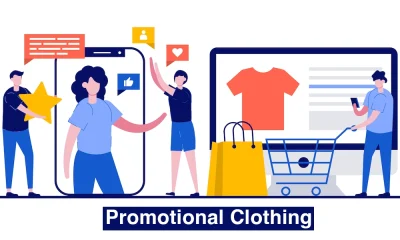Marketing
Don’t Be Basic: The Basics of Ad Campaigns

About 85% of business owners rely on word of mouth marketing to build their business. That’s not a bad way to build the business. It’s slow and steady.
What if your business is at the point where you want to grow, and grow quickly? You have to invest in ad campaigns to make that happen.
Advertising works and it has for centuries. That’s why it’s a multi-billion dollar industry. If you’re new to the world of advertising, you need to learn how to start your first campaign.
Keep reading to learn what ad campaigns are and the basics of starting your own ad campaigns.
What is an Ad Campaign?
Let’s get really basic. What is an advertising campaign? It is a coordinated strategy to promote something. That something can be a product, a cause, a political candidate, or a service.
That coordinated effort needs to have a few components that we’ll go over. You need to have purpose, goals, a strategy, a message, the appropriate marketing channels, and a way to measure success.
Purpose of the Campaign
Why invest in an ad campaign? That’s the purpose. There are a number of reasons to advertise. You can increase your brand’s awareness, launch a new product, increase sales for a product or service, or get leads for a B2B business.
Your campaign starts with your purpose. Write down what you want your advertising campaign to do for you.
Target Audience
Who do you want to reach with your ads? Part of that will depend on your purpose. If you’re a new gym opening up, you want your ad campaign to reach people in a 10-mile radius of your location to create awareness and drive new memberships.
You want to know the demographic information about your audience, and the psychographic audience.
Demographic information includes things like age, gender, marital status, total household income, and zip code.
Psychographic information uncovers why someone needs your product or service. It’s the underlying emotions behind their needs.
Using a gym as an example again, you know that people generally want to lose weight. Dig a little deeper, you find that they want to feel more confident, attractive, and healthier.
Demographic information will only give you so much information. Besides, you can have many types of demographics that share the same psychographics.
For example, you may find that women between 21-28 want to lose weight to feel confident as do 40-55-year-old women.
The reason why you need psychographics and demographics is that you can tailor your messages for each audience. You probably wouldn’t talk to a 21-year-old the same way you would a 50-year-old.
They have different life experiences and different ways of relating. That kind of detailed targeting is called audience segmenting.
The more granular you can get with your audiences, the more likely you are to have a successful ad campaign.
Ad Budget
Your budget needs to be set early on in the process. That makes it much easier to choose your advertising channels.
You could choose your advertising channels first and develop creative for them. The challenge there is that you could have ad creative that you can’t afford to run.
You want to look at the different channels, the cost to advertise there, and consider what a client is worth to your business. You need to know what the lifetime value of that customer is. You then need to know how much you’re willing to spend per lead.
Choose Where to Run Campaign
In 1964, Marshall McLuhan coined the phrase, “the medium is the message.” What he was saying is that the place where you choose to advertise is more important than the message itself. He said that how we interact with various media, whether it’s a print ad or display ad affects how the brand is perceived.
That interaction is more important than the message. That may or may not be true, but it does underscore how important the right advertising channels are.
It’s your job to make sure that you choose channels that your target audience use and will see your ad campaign. The advertising channel has to be congruent with your goal.
For example, if your goal is to generate sales, you need to have a more direct ad campaign and target people who are already familiar with your brand. You then need to choose a channel that matches that intent.
If someone is scrolling on Instagram or Facebook, they’re not thinking about buying a product, even if it’s under $20. There are going to be more steps to get someone to buy.
However, if you run a PPC campaign or SEO campaign, you’re able to target people who are looking to buy that product at that moment.
The Advertising Campaign Channels
How do you choose the right media for your message? Go back to your goals and your audience. That will tell you exactly where to advertising. Here are some potential options and what they’re good for.
PPC Ads
PPC ads are good if you want to have more control over your budget. They’re pay-per-click ads, which means that you only pay when someone clicks on the ad.
These are mostly seen in search engines like Google. These are ads that are good for just about any purpose because you’re reaching people by the target audience and search terms that you set.
These are simple ads because they’re text ads. However, they are very complex. You have to have each step be perfect. You may need Google Ads services to help you set up your campaign.
Magazine Ads
Ad campaigns have relied on magazine ads for years. These are usually print ads that can be ¼ to a full-page, full-color ad.
These are among the more expensive advertising channels, but they allow you to target a specific audience. Magazines are geared towards specific interests. They’re great for building up your brand.
Social Media Ads
These are among the most affordable types of ads, but you need to choose the right social network. These are also great for brand awareness and lead generation.
Develop Core Message
It’s debatable as to whether the medium really is the message. What you have to assume is that the message is just as important. It’s fair to say that both the medium and the message work together to evoke an emotion.
That’s what you want. An emotion. You don’t have to make people cry or angry, but you do need them to feel something. That something should be congruent with your brand and the goals of your campaign.
Nike is a great example of a company with great ad campaigns that almost always evoke emotion. At the core of Nike is the belief that everyone is an athlete. The company seeks to inspire by using elite athletes and unlikely heroes as a source of inspiration.
Your core messages are going to be the foundation of the content of your ad campaign. These need to be simple sentences that convey the benefits of your company. They need to be original, and fun (if it fits your brand).
Take your time and write out 20 potential marketing messages. You’ll want to narrow this down to 1-3 messages for your campaign.
Look at the Complete Journey
You need to think of your ad campaign as only one part of the journey. You don’t want to make the mistake that someone sees your ad and they will automatically buy from you.
It takes time to build trust, especially online. You need to look at the entire customer journey. Someone sees your ad and they click on your link.
They won’t go to the home page of your website. They’ll go to a landing page, which is set up to validate their click. The landing page will have a call to action, which tells the prospect what to do next.
They may leave your site, which is where you can use a retargeting campaign to keep your brand in front of those people and get them to visit your site again.
They may do so and take some kind of action, whether it’s to schedule an appointment or download a whitepaper.
Measuring Results
No matter what your purpose and marketing channels are, ad campaigns need to be measured. How else are you going to be able to tell if they were successful or not?
Digital marketing ad campaigns are easier to measure because most advertising channels provide analytics. You can also see the number of leads or sales that come to your website through Google Analytics.
Run Ad Campaigns Like A Pro
You don’t need to step onto the set of Mad Men to understand the basics of ad campaigns. The great thing about advertising is that the basic principles of advertising don’t change. The technology and advertising channels do.
You still need to understand your target market, develop the right messages, pick the right adverting media, and align your goals and strategy with your mission.
Are you ready for more top business tips? Check out this site for more great business content.






